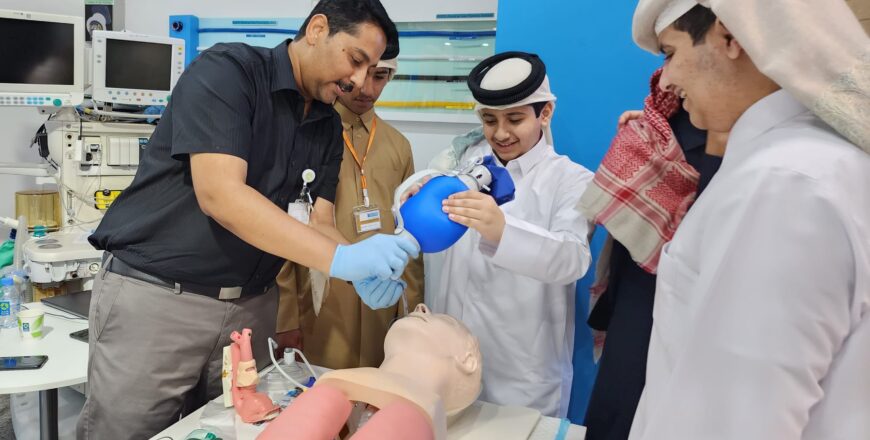Bag & Mask Ventilation
As always, please feel free to pause the video and take notes as needed.
Welcome to this demonstration video of Bag & Mask Ventilation.
The purpose of this video is to provide a visual guide for using Bag & Mask for Ventilation.
Introduction: Bag and mask ventilation is an important and lifesaving airway management skill. With training this skill can be mastered. Once mastery is achieved you can go ahead and save lives with confidence. The following video will help achieve necessary skills to use a bag and mask with confidence.
Equipment setup:
Let us check if we have the suitable necessary equipment and make sure they are working properly.
Check if an oxygen supply is available, high flow is preferred, with suitable tubing and connectors.
Suction is checked and should be effective with suitable tubing and a range of suction catheters available.
Airway adjuncts such as Oro-pharyngeal airway nasopharyngeal airways with varied size range is at hand.
The appropriate size of face mask is crucial as smaller masks will cause leaks and larger mask will cause pressure on the eyes.
Suitable equipment should be ready if tracheal intubation is planned.
All these equipment checks will be usually done by your trained assistant but it is important to be aware so you can save some time by arranging the equipment prior to starting bag mask ventilation.
Technique:
Bag and mask ventilation initially might seem technically difficult, but we shall give you tips to make it easy and master it.
Look inside the mouth of an unconscious person to check if it is free of foreign bodies or vomitus. If so, clear them with finger sweep or careful suction. Rest the head on a pillow or folded towel.
Let’s perform Jaw Thrust; Jaw thrust is one of the most crucial steps in bag-mask ventilation. It lifts the entire lower jaw with its structure and keeps the tongue away from the posterior pharyngeal wall. To do this, the angle of the mandible is identified and with the tips of the inner two fingers of both hands, the lower jaw is lifted forwards. Once this is done, an assistant can pass the mask to be firmly applied to the face.
Mask Holding: Holding a mask for mechanical ventilation is equally crucial. Appropriate sized mask should be used to prevent leak or pressure injury to eyes.
It should be held so that no leak occurs, and one should not tire the hands. Various methods are described. Popular strategy is C-E technique. The thumb and index finger forms letter C and the rest of the fingers form letter E. If you extend your wrists while holding the mask strain on small muscles of your hands can be avoided.
Once this is done the next crucial step is ventilation.
This is performed with the help of a ‘Bag”. This is usually a self-inflating reservoir with one-way valves inbuilt allowing to suck atmospheric air and provide a positive pressure breath while the mask is being firmly placed over the face.
Most bag systems have a port for connecting high-flow oxygen in order to ventilate with high-concentration oxygen.
The bag is different when an anesthetic machine is used as the machine uses continuous flow and the bag inflates from this flow. There are a few important precautions that need to be taken whilst ventilating.
Extreme caution should be taken not to inflate stomach. When this happens, there is high risk for regurgitation and aspiration of stomach contents.
Please take care of holding the mask firmly to prevent leaking around the mask. Adjust the seal by tilting sideways to make a good seal.
Using oro-pharyngeal or naso-pharyngeal airway will significantly prevent tongue falling back and reduce ventilating pressure.
There you go, happy ventilating.
Thank you for watching and we hope you found this video helpful.
For any question, please visit: https://damsociety.com/

